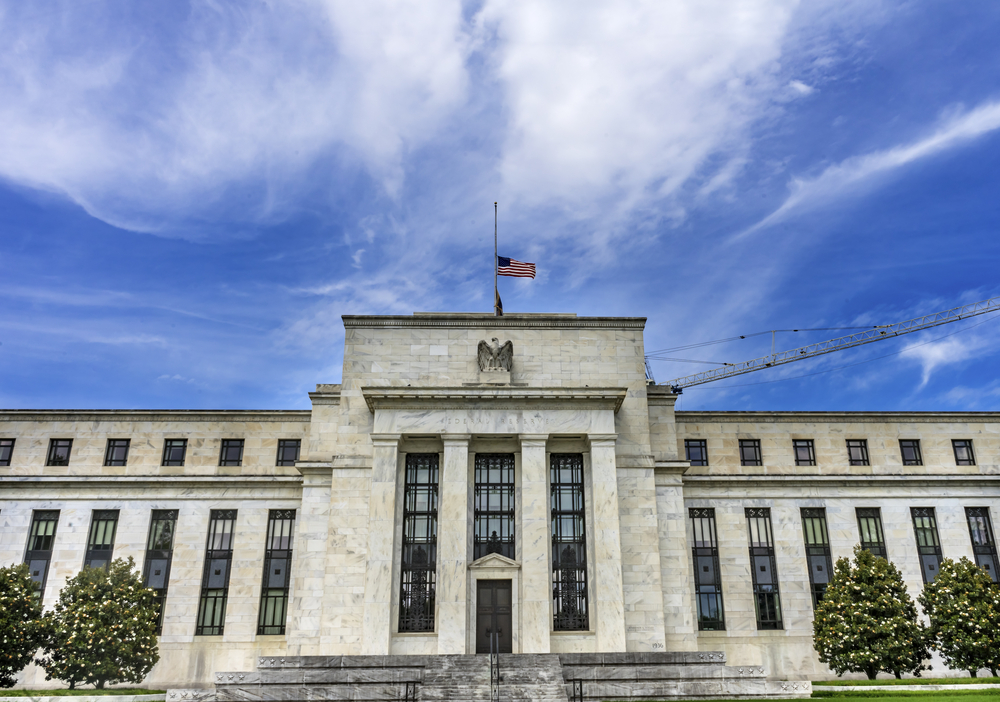
Monetary Policy & Inflation | US

Monetary Policy & Inflation | US
This article is only available to Macro Hive subscribers. Sign-up to receive world-class macro analysis with a daily curated newsletter, podcast, original content from award-winning researchers, cross market strategy, equity insights, trade ideas, crypto flow frameworks, academic paper summaries, explanation and analysis of market-moving events, community investor chat room, and more.
On 30 September, Powell turned noticeably more hawkish than at the FOMC two weeks before. When asked why, he explained GDP and labour market data had been diverging and that historically the labour market data had proved more reliable. However, this time GDP revisions published after the September FOMC gave him confidence the GDP data would prove the more reliable.
Since Powell’s last speech, data surprises have been mainly positive and supported his hawkish turn (Chart 1 ). Q3 GDP was 2.9% QoQ SAAR and 3.5% excluding the volatile inventories changes and external trade (Chart 2). The trade deficit has been worsening, a sign of demand continuing to grow ahead of supply (Chart 3). Overall, GDP growth Q4/Q4 is likely to exceed the Summary of Economic Projections (SEP) forecast of 2% (Table 1).
The labour market has been tightening. Nonfarm payrolls (NFP) recovered, unemployment fell, jobless claims remain low despite the hurricanes, firms are hiring more workers than they are losing, and minorities are still facing a tight labour market (Charts 4-7, for further details see NFP Review).
Sam’s model predicts a large negative surprise to Friday’s NFPs amid exceptional individual forecasts dispersion. But the Fed is likely to look through any such surprise. Waller has already stated he sees hurricanes and a strike detracting about 100,000 from NFP. And a weather-related low NFP print is likely to self-correct. Overall, unemployment still seems likely to end 2024 below the Fed forecast of 4.4% for Q4.
Wage growth picked up MoM in August-September, translating in YoY stabilization around 4% in Q3, above the 3.5% the Fed sees as consistent with 2% inflation (Chart 8). Wage inflation stabilization is also shown by the Atlanta Fed median wage and by the consensus forecast of 0.9% QoQ for Q3 ECI, the Fed’s preferred measure of wages.
Core Personal Consumption Expenditures (PCE) stabilized in Q3 at 2.6%, based on Sam’s model predicting 2.6% YoY in September (Chart 9). Shelter inflation remains the laggard in the disinflation process and is likely to remain so given the structural housing shortage (Chart 10).
Core inflation is likely to remain within the Fed’s comfort zone until end-year. Q4 core PCE seems more likely to be above the September SEP Q4/Q4 forecast of 2.6%. This is because core PCE would have to increase less than 15bp/month for Q4/Q4 inflation to remain below 2.6%. This seems unlikely given the six months and three months averages of MoM core PCE at 20bp and 17bp respectively, and the macro backdrop supporting inflation stickiness.
However, in the September SEP, the 2024 core PCE forecast was lowered to 2.6% from 2.8% in the June SEP. This signals Fed tolerance for core PCE stickiness (and likely an intention to implement opportunistic disinflation, which I will discuss in future research). Overall, the Fed will not change its current policy stance because core PCE is likely to end 2024 above 2.6%.
The Federal Funds Rate (FFR) is 4.8%, above the FOMC estimate of the long-term FFR at 2.9% (Table 1, Chart 10). The Fed’s own indices of financial conditions show they are detracting from growth. The FFR remains above the Taylor rule despite last month’s 50bp cut (Chart 11).
FOMC members speeches show the policy stance remains restrictive, though they have turned noticeably more cautious with rate cuts (Table 2).
Based on the strong data roughly in line with the SEP and on the Fed’s belief its stance is restrictive, I expect the Fed to cut 25bp next week.
I also expect the tone of the meeting to remain hawkish. The statement’s key changes are likely to be in the first paragraph, with an upgraded labour market assessment. Powell is likely to convey hawkishness in the presser, for instance, by stressing the growth dynamism and labour market resiliency.
I expect Powell to decline to provide guidance on the December FOMC, but I still expect a 25bp cut. The reasons are:
Longer term, inflation is likely to prove stickier than the Fed expects. I think the combination of disinflation with above trend growth reflects largely normalization from the pandemic as well as the 2022-24 immigration surge that has now ended, irrespective of who wins the November elections. Also, considerable macro risks exist regarding the elections outcomes.
I expect quantitative easing to continue, in line with substantial reserves and few signs they are near ‘ample’ (Charts 13 and 14).
My expectations for 25bp cuts in November and December roughly align with market pricing.
Spring sale - Prime Membership only £3 for 3 months! Get trade ideas and macro insights now
Your subscription has been successfully canceled.
Discount Applied - Your subscription has now updated with Coupon and from next payment Discount will be applied.